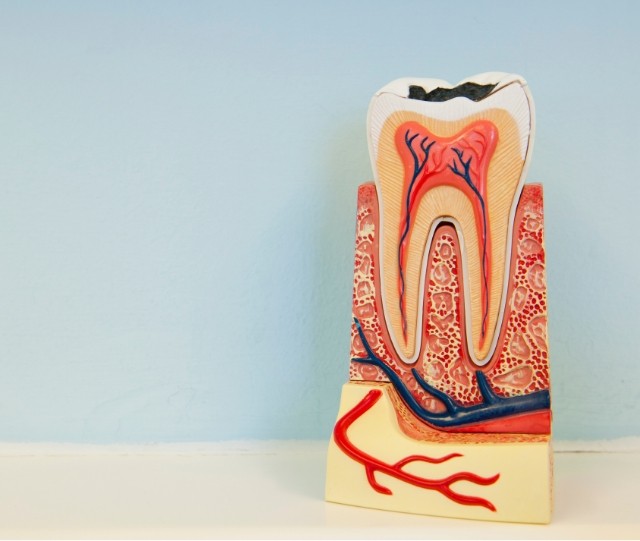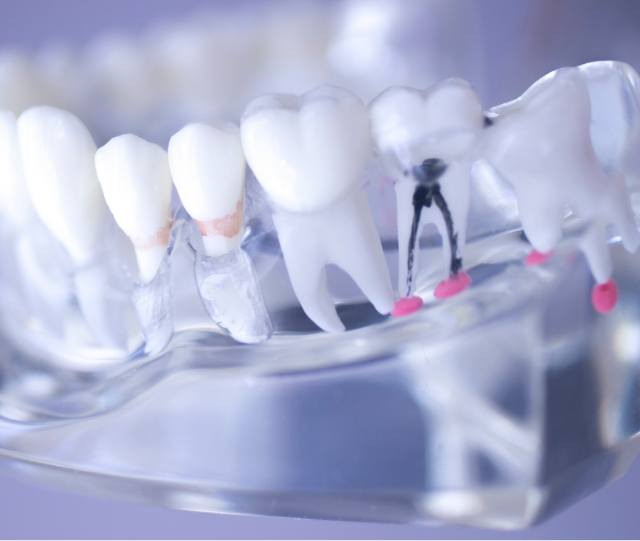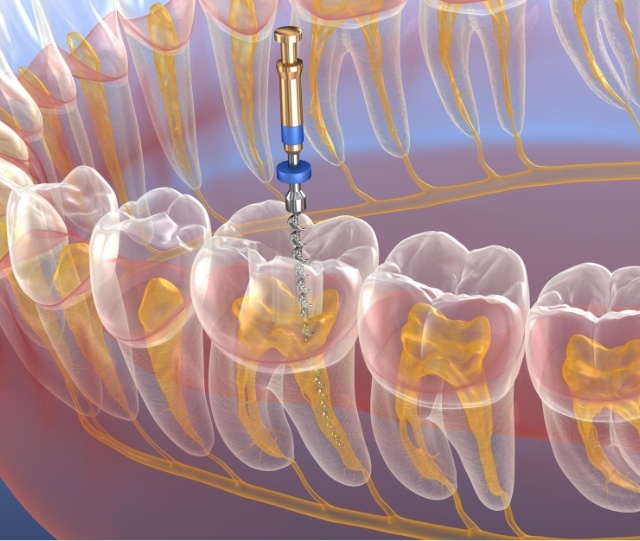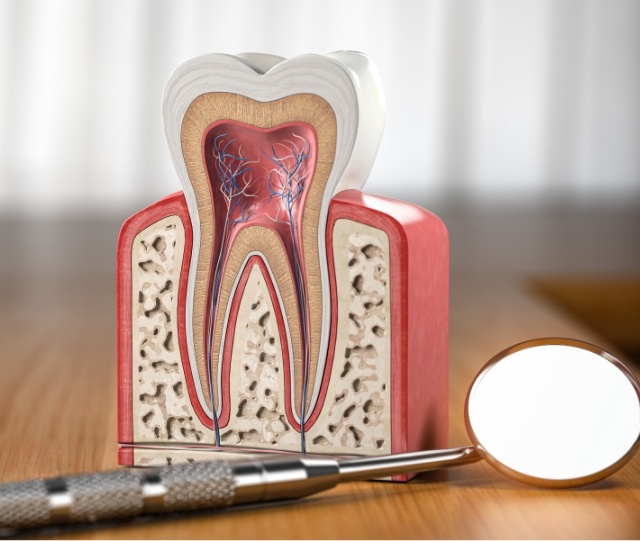Root Canal Treatment Asheville
Treating the Infection, Eliminating the Pain

Of course, pain isn’t pleasant, but it is important. Pain is usually the body’s way of telling you that something is wrong. In the case of a toothache, that pain may be sending the message that you have an infected tooth. If so, then root canal therapy may be necessary. In Asheville, a root canal treatment is the dental procedure Dr. White performs to remove the infection from inside your tooth, save the tooth, and restore your healthy smile. Call us today to learn if a root canal is what you need for better oral health.
Why Choose Dr. John White, DDS For Root Canal Treatment?
- Experienced Dental Team Offering Comfort & Care
- We Will Help to Maximize Your Dental Benefits
- Updated, Modern Dental Technologies Available
How Does Tooth Infection Begin?

Every tooth in your mouth consists of three layers. The outer layer, enamel, is the hardest and gives your smile a beautiful sheen. Below this is dentin, a somewhat softer substance that conducts sensation to the nerve. Finally, there is the pulp chamber located at the core of each tooth. Here you’ll find nerve, blood, and lymph tissue. The attached root canals transport nutrients to the chamber and ferry away waste and toxins.
Normally, the pulp chamber and root canals are well protected. However, in the case of severe decay or traumatic injury, bacteria can enter this portion of a tooth and cause infection.
What are the Symptoms of an Infected Tooth?

As the infection develops, inflammation inside the tooth usually leads to unbearable pain. However, there are instances when you may have an infected tooth without pain. Because of this, maintaining regular dental checkups with Asheville dentist Dr. White is critical, so we can take digital X-rays annually and monitor the health of each tooth.
Other signs and symptoms of an infected tooth are:
- A tooth that is particularly sensitive to hot and cold temperatures as well as the pressure of normal biting or chewing
- Facial swelling near the tooth in question
- A small sore on your gum tissue near the tooth
- Fever
If you or a loved one experiences any of these, then it’s time to call our office to schedule an appointment. Dr. White will give you a diagnosis and treatment plan that will likely include root canal therapy in Asheville.
When Do You Need Root Canal Treatment?

Your tooth contains a collection of soft tissue called the pulp, which contains the tooth’s nerves as well as various arteries, veins, and blood tissues. The pulp can become infected due to a deep cavity or fracture. Said infections are normally very painful, and if they go untreated for too long, the pulp could die. Eventually, the infection could spread beyond the roots of the tooth, causing the nearby bone tissue to degenerate. As a direct result, the tooth would eventually become lost. The endodontic care that Dr. White offers is meant to stop these infections before the tooth is beyond saving.
What Happens During a Root Canal?

Unfortunately, root canal therapy has a reputation for being uncomfortable and painful. In truth, this common dental procedure is intended to alleviate discomfort and pain. And thanks to modern anesthesia and advanced dental technology, a root canal is no more troublesome than having a cavity filled.
Dr. White will drill a small access hole through which he’ll insert special dental files in order to remove the infected contents of the pulp chamber and root canals. Luckily, your tooth can function well without the nerve, blood, and lymph tissue. Then, the area will be disinfected and filled with an inert substance that prevents recontamination. Finally, the tooth is sealed and prepared to have an eventual porcelain crown that will protect the tooth and restore form and function.
Root Canal Retreatment

On occasion, root canal therapy might fail to completely remove the infection, or a new infection might occur due to the inner portions of the tooth becoming exposed again for one reason or another. It’s still often possible to save the tooth if this happens. It often involves making a small incision in the gum tissue so that Dr. White can remove a small portion from the tip of the tooth root. This gives us a chance to extract any part of the pulp and nerve system that remains.
